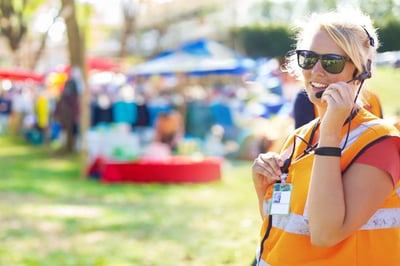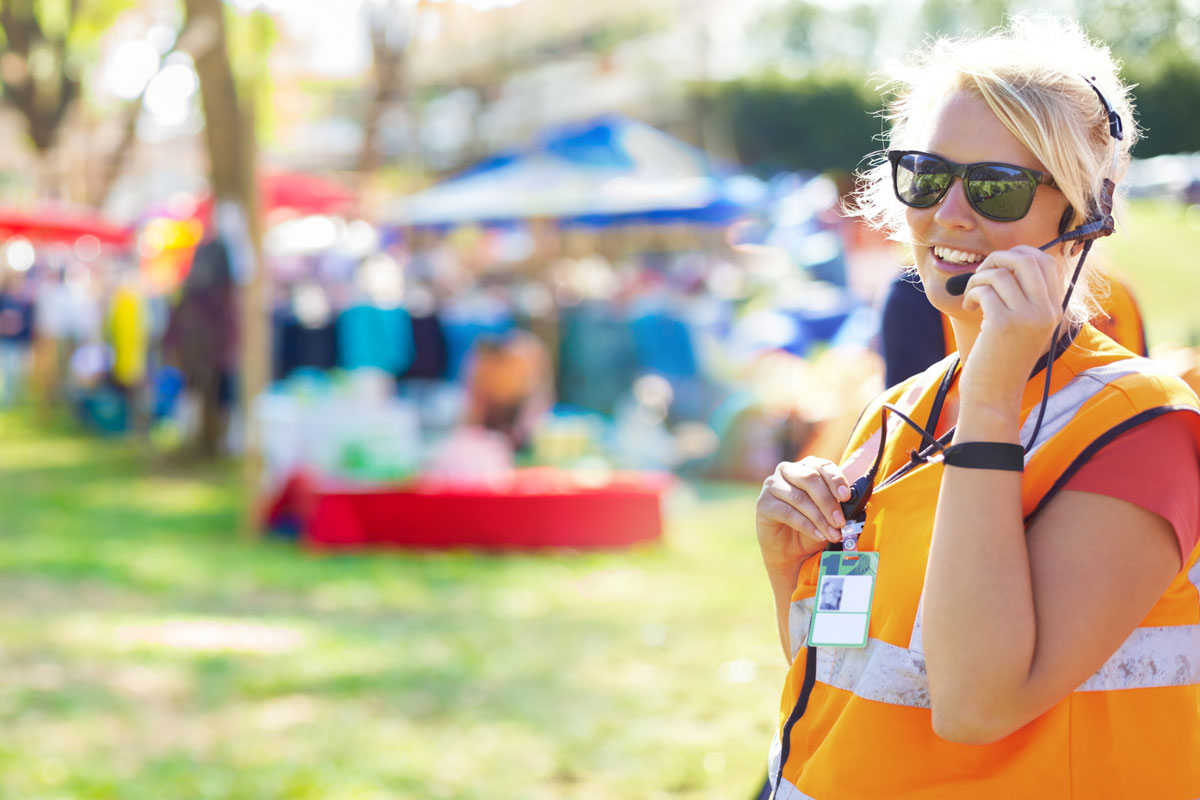 In my town of Cedar Lake, Indiana, we have a farmer’s market every Tuesday.
In my town of Cedar Lake, Indiana, we have a farmer’s market every Tuesday.
They have an interesting history of how they came to inherit their communication system. When the town’s police and fire department upgraded their two-way radio system, they passed along their older system to the public works department that runs the farmer’s market.
Before that, this small department didn’t have any of its own communication equipment. But the radios still work fine. So when the public safety folks moved into using a P25 network, the high-performing public safety standard, they realized that they could now serve as event communication radios for town’s events, including the once-a-week farmer’s markets.
The cost to the town: $0.
Event Radio Communication
That’s what is working in my town at a low-key event that doesn’t really require a full police presence. Of course, it’s not the event radio communication solution for everyone.
At any big festival or fair, police will be on site. It’s the same if it’s a Bears game, a Bull’s game, or a concert at the Hollywood Casino Amphitheater in Tinley Park, Illinois. There are public safety people there using whatever communication system that they have.
On the other end of the spectrum are smaller events that have no real communication system. They just set up tents, and there’s just one person there who’s running the event.
It’s not a problem at events in Cedar Lake or other small towns near us because the police department is literally a thousand feet away; communication is not an issue.
But even in these small events, they need to know how to interface with police and fire so everyone visiting the event stays safe.
Connecting to Public Safety
In the best case scenario, event organizers will have an interface that can link multiple devices and connect to public safety channels. If you have a VHF radio, you can link to it. If you have a UHF radio, you can link to it. These days, there are entire new levels of interoperability in systems like Motorola’s Safety Reimagined where voice, data, analytics, and video are all talking to each other.
That’s not how it used to be, and that was a problem.
Thankfully, these days larger organizations, like the refineries around here, have their own internal radio system for communication. They also have their own internal fire and police departments. If there was an emergency at the refinery, word would go out immediately to all the public safety organizations: Hammond, East Chicago, Gary. Because if there's a fire at the refinery, you need an immediate response, no matter what size.
But those are pretty advanced systems. What happens if there is an emergency at a carnival, farmer’s market, or concert in a park in a place where they don’t have the same types of budget?
Solutions for Smaller Budgets
Smaller festivals, like a corn roast that we have around here, don’t have the money for a big investment in communications technology. But they still need to keep people safe.
One good option for one-off events is two-way radio rentals. Renting two-way radio equipment is a cost-efficient way to get the right equipment for a trouble-free event. Chicago Communications provides short and long-term rentals for charity gatherings, sporting events, and corporate meetings and conferences.
If the event organizers don’t have the budget for rentals, they can also coordinate with the local police and fire department, or the sheriff’s department. For example, our county fair has security controlled by the sheriff; they even have ambulances on site. Some events have volunteers that have radios that are able to interface with the police and fire departments.
Larger events like that will have a command center on site, but I’m hoping that some of these smaller events can find funding, maybe from grants, to cover some communication equipment that would make it easier to coordinate in case of an emergency.
Event Planning
When people are new to planning events they might not be thinking about some of these details, or considering worst-case scenarios. I’m hoping it can become part of more conversations early on. What is the plan for safety and communication?
The ideal situation is that you have two-way radios so that you can communicate with each other about the garbage cans and other mundane, happy things of keeping a festival running. But then you're also connected with police and fire in case bad things happen.
Two-way radios provide that instant communication that allows you to push one button and you’re talking to someone: “There’s a guy who fell and broke his leg. We’re at the popcorn stand at the south end of the fair.” Users can create workgroups so only people who need to know that information are hearing it, and the people who need to respond know instantly.
I'm using that as a light example, because we all know that no one is immune to the kinds of incidents we are seeing in schools and communities around the country. Obviously, we want to keep everyone safe while understanding the limited budgets that some of these events have.
The Benefits of Leasing
There are public safety grants available, and that could be a solution for some events. I also like to let people know about the convenience and low cost of leasing two-way radios. Leasing terms have become very favorable. Depending on the time you sign, I’ve seen 0% leasing for 12 months. That’s a great solution for event planners that need the equipment now but don’t have funds until after the event.
That’s just one of the creative financial arrangements that can be worked out with leasing.
Planning for Disruptions
No matter what size event or type of organization you're working with, I can’t stress enough the benefit of planning ahead for your communications needs. Today’s supply chain issues are making it difficult to get anything from anywhere.
None of the vendors want it to be that way. I am delivering orders from last October. But it’s just the lay of the land. The big thing for me is I have been in constant communication with everybody that I deal with to update them on the supply chain.
I’m letting them know if they need something by December, order it now. You don’t pay for it until you receive it, so there’s really no downside to planning ahead.
With the right kind of planning, including thinking through worst-case scenarios, we can all come together and enjoy the events that bring us closer.



